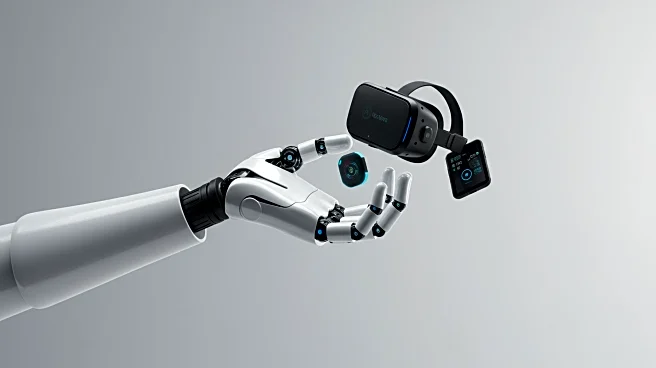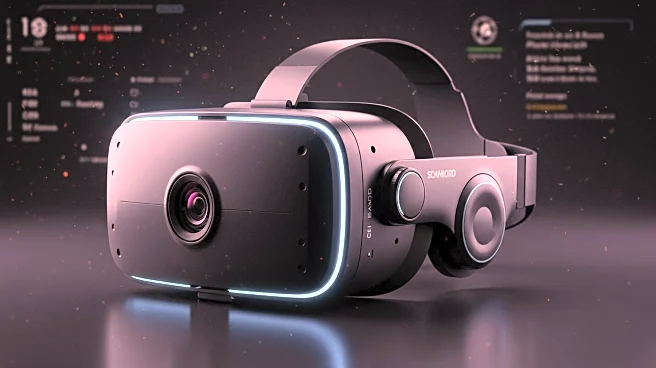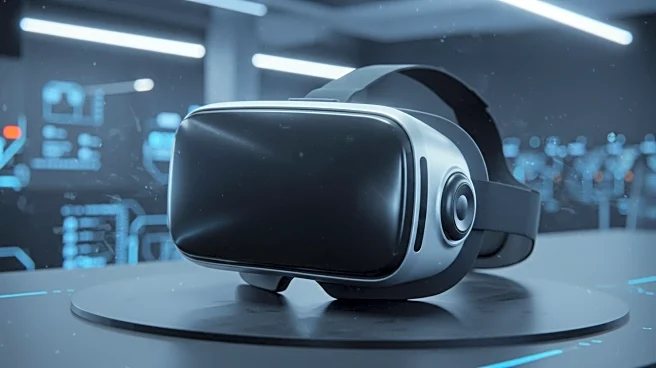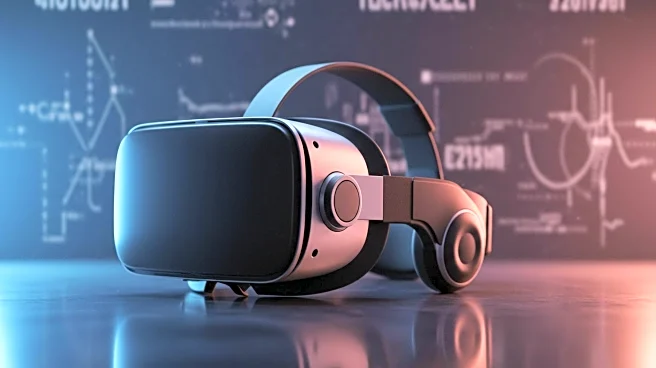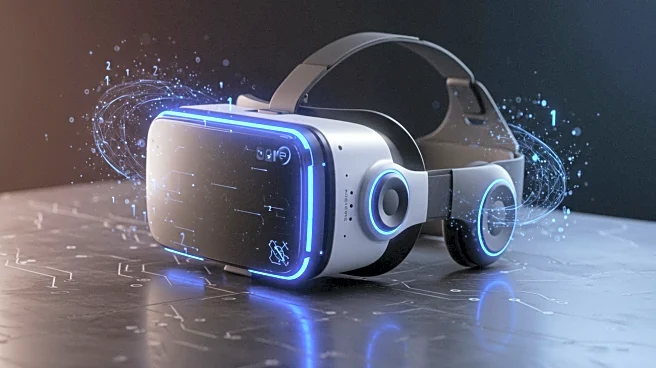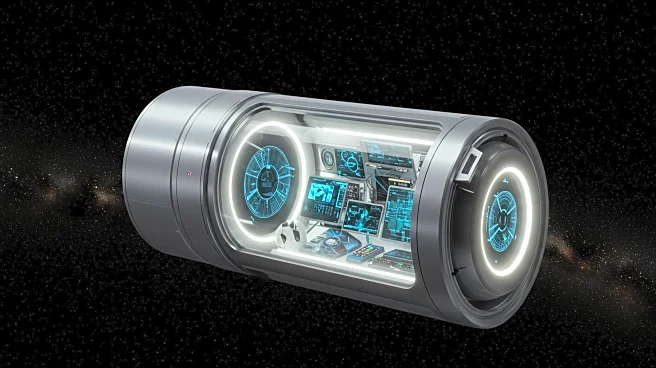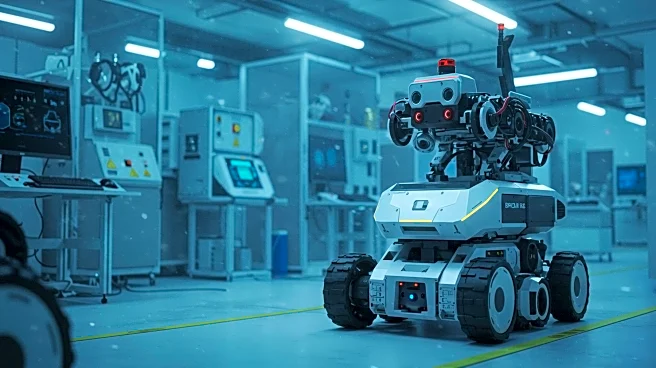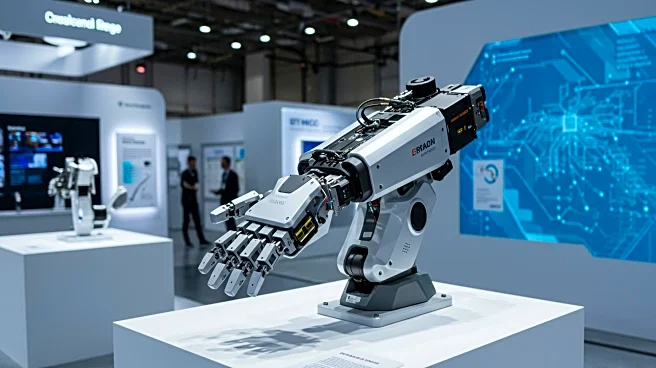What's Happening?
Researchers at Princeton University have developed an innovative system involving invisible mobile robots capable of delivering items such as food and water to users immersed in virtual reality (VR) environments. The project, which took nearly a year to complete, utilizes a robot control engine named Skynet. This system allows a robot, also equipped with a VR headset, to deliver items without disrupting the user's immersive experience. The demonstration involves a user wearing a Quest 3 headset who can interact with a 3D model of an item, such as coconut water, and watch it materialize on their desk. During this process, the robot discreetly moves the physical item to the user's location, creating the illusion of teleportation. The research was presented at the ACM Symposium on User Interface Software & Technology, highlighting its potential to enhance the functionality of VR and mixed reality headsets.
Why It's Important?
This development represents a significant advancement in the integration of robotics with virtual and augmented reality technologies. By enabling seamless delivery of physical items within a virtual environment, the research could revolutionize user interaction with VR systems, making them more practical and immersive. This technology has the potential to benefit various industries, including gaming, remote work, and telepresence, by enhancing user experience and expanding the capabilities of VR headsets. The ability to make robots 'invisible' to users could also lead to new applications in fields such as education and training, where maintaining immersion is crucial. As VR and AR technologies continue to evolve, such innovations could drive further adoption and integration into everyday life.
What's Next?
The research opens up possibilities for further exploration into the practical applications of invisible robotics in VR and AR settings. Future developments may focus on refining the technology to handle more complex tasks and interactions, potentially leading to commercial applications. Stakeholders in the tech industry, particularly those involved in VR and AR development, may take interest in this technology for its potential to enhance user experience and expand market opportunities. Additionally, further research could explore the ethical and privacy implications of using invisible robots in personal and professional environments.
